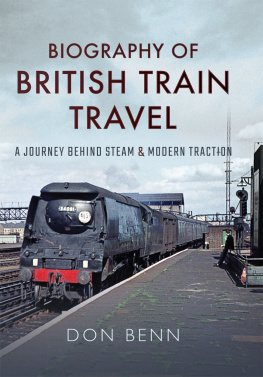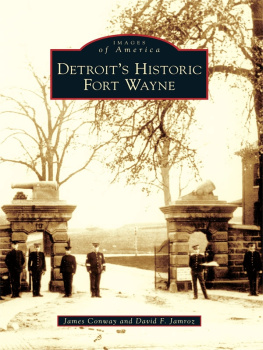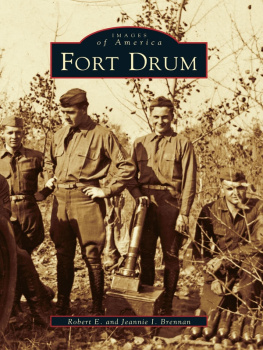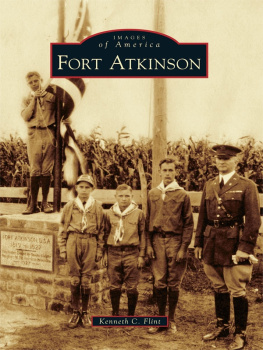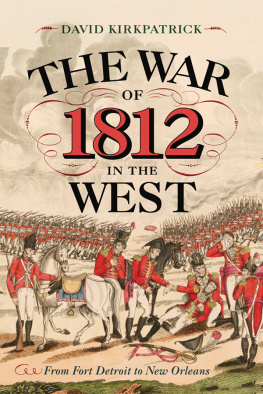HISTORIC FORT YORK
17931993
Fort York
is a historic site museum operated by
the Toronto Historical Board
The Toronto Historical Board was established by the
Corporation of the City of Toronto
in 1960
Fort York is located in downtown Toronto
on Garrison Road off Fleet Street
between Bathurst Street and Strachan Avenue
HISTORIC FORT YORK
17931993

CARL BENN

This book is dedicated
to the memory of the late
Colonel Charles P. Stacey,
one of Canadas foremost historians and
First Honorary Curator of Fort York.
Historic Fort York, 17931993
by Carl Benn
Published by Natural Heritage/Natural History Inc.
P.O. Box 95, Station O, Toronto, Ontario M4A 2M8
Copyright 1993 Carl Benn
No portion of this book, with the exception of brief extracts for the
purpose of literary review, may be reproduced in any form without
the permission of the publisher.
MAPS: Kevin Hebib
COPY EDITING: Wendy Thomas
DESIGN AND TYPESETTING: Robin Brass Studio
Printed and bound in Canada by Hignell Printing Limited,
Winnipeg, Manitoba
Canadian Cataloguing in Publication Data
Benn, Carl, 1953
Historic Fort York, 17931993
Includes bibliographical references and index.
ISBN 0-920474-79-9
1. Fort York (Toronto, Ont.) History.
2. Fortification Ontario Toronto History.
3. Canada History, Military.
4. Historic sites Ontario Toronto.
I. Title.
FC3097.8.F67B46 1993 971.3'541 C93-094175-6
F1059.5.T688F67 1993

Natural Heritage/Natural History Inc. gratefully acknowledges the assistance of the Canada Council, the Ontario Arts Council, and the Government of Ontario through the Ministry of Culture, Tourism and Recreation.

FOREWORD
by
THE HONOURABLE HENRY N. R. JACKMAN,
LIEUTENANT-GOVERNOR OF ONTARIO
Two hundred years ago Lieutenant-Governor John Graves Simcoe founded Toronto when he established Fort York. Immediately afterwards, he moved the provincial capital from the border town of Niagara to Toronto as a temporary emergency measure. Both acts were part of Governor Simcoes preparations to defend Upper Canada (now Ontario) from an expected American invasion. Civilian settlement followed the government, and a community, named York, began to grow just east of the garrison.
While the threat of hostilities passed by 1794, ongoing tensions with the United States led to war in 1812. Between 1812 and 1814, British troops, Canadian militia, and Aboriginal warriors marched from Fort York to preserve our sovereignty against foreign assault. In 1813 and 1814, Fort York itself came under attack when American forces targeted the provincial capital in their efforts to annex Canada. Although the Americans captured York twice in 1813 and enjoyed military success elsewhere, the colonys defenders ultimately succeeded in defending our territorial integrity from conquest.
After the War of 1812, British and Canadian troops continued to garrison Fort York to guard the province from foreign expansion and internal unrest. These soldiers and their families made important contributions to colonial society as it grew in size and sophistication. In 1834, this growth saw York incorporate as the City of Toronto, a prosperous centre with a population of 9,000. In 1867, when Toronto had 50,000 people, Canadian society had matured to the point where the British Parliament made Canada a self-governing Dominion.
Often, we overlook the roles the military played in protecting our sovereignty during the formative years of Canadas evolution from colony to nation. Had it not been for the soldiers in garrisons such as Fort York, Canadas distinctive social and national development might very well have been stillborn at some distant point in our past.
As John Graves Simcoes modern-day successor, I take pleasure in commending this book to your attention. Through it, I invite you to explore the exciting world of our turbulent military past. At the same time, I hope you will spare a thought for the people most of them now nameless who defended our society in its fragile formative decades.

THE HONOURABLE HENRY N. R. JACKMAN,
LIEUTENANT-GOVERNOR OF ONTARIO

CONTENTS
LIST OF PLATES
LIST OF MAPS
ABBREVIATIONS FOR COMMONLY
CITED SOURCES
AO | Archives of Ontario, Toronto |
CTA | City of Toronto Archives |
MTL | Metropolitan Toronto Library |
NAC | National Archives of Canada, Ottawa |
NYHS | New-York Historical Society, New York City |
THB | Toronto Historical Board |

Map 1: Fort York Today
1 & 2 The BRICK BARRACKS, constructed in 1815, each contained three rooms which housed 25-35 soldiers, soldiers wives and children. By the 1860s, when barracks facilities were improved, some rooms were converted into married quarters with two or three families per room, while others were made into sergeants quarters, and another room became a school.
The brick OFFICERS BARRACKS AND MESS ROOM was built in 1815 and enlarged in 1826. It was divided into three sections: two served as officers quarters and the other was the general mess dining room for all the officers in the fort. Married officers usually lived in York (Toronto). There are two money vaults in the cellar, installed in 1838 to store government and Bank of Upper Canada funds during the tensions that followed the Rebellion of 1837.
The junior OFFICERS BARRACKS was constructed in the 1930s to represent an earlier 19th-century building. Much of the present building contains material from the earlier structure.
5 BLOCKHOUSE NUMBER 2, built in 1813, doubled as a 160-person barracks and fortification. The structure is splinter- and bullet-proof, and has musket loopholes and artillery ports.
The BRICK MAGAZINE, built in 1814, originally was a bomb-proof gunpowder magazine. However, its walls were unable to support the weight of the vaulted bomb-proof roof and in 1824 the roof was removed and a second floor was added. It then was used as a storehouse for weapons and other equipment.
7 BLOCKHOUSE NUMBER 1, constructed in 1813, could accommodate 124 people. It originally had a cellar that could serve as a magazine.
The STONE POWDER MAGAZINE was built in 1815 to provide bomb-proof storage for 900 barrels of gunpowder (each weighing about 41 kg). It has walls 2.2 m thick, a vaulted roof, spark-proof copper and brass fixtures, and a simple but effective ventilation system to keep the powder dry.
Next page

